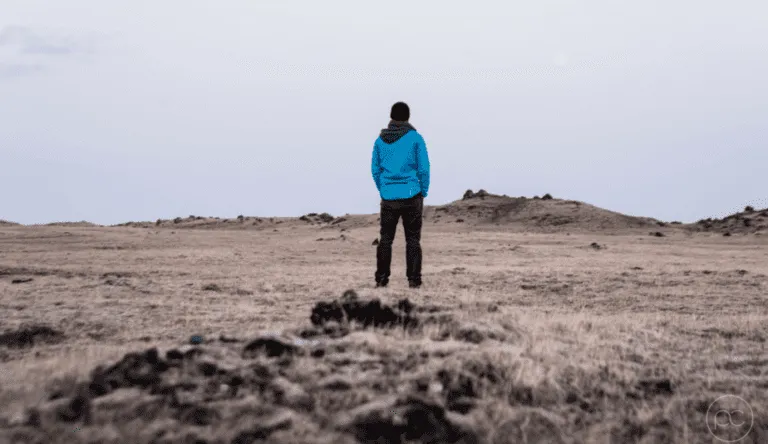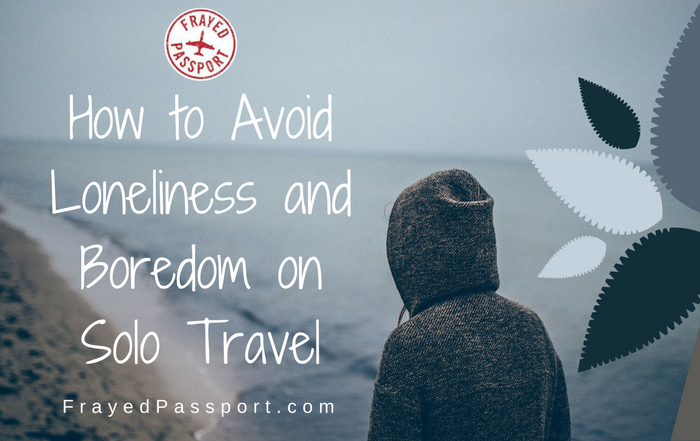Embarking on a solo nomadic journey can be incredibly rewarding, offering unparalleled freedom and self-discovery. However, the path to wanderlust isn’t always paved with vibrant social connections. This guide delves into the multifaceted challenge of loneliness for solo nomads, offering practical strategies to build supportive networks, cultivate a healthy lifestyle, and leverage travel experiences to combat feelings of isolation.
We’ll explore the unique psychological impact of loneliness on the nomadic experience and offer solutions to help you thrive.
From understanding the root causes of loneliness in this unique lifestyle to building a strong support system, whether online or offline, this guide will empower you with actionable advice. We’ll cover practical strategies for maintaining a healthy lifestyle while traveling, including mindfulness techniques and self-care practices. Furthermore, the guide will provide insights into using travel experiences to build connections, overcome social anxiety, and create a sustainable and fulfilling nomadic journey.
Ultimately, this comprehensive approach aims to equip solo nomads with the tools they need to thrive on their adventures.
Understanding Loneliness as a Solo Nomad

Solo nomadism, while offering unparalleled freedom and exploration, presents unique challenges, including the potential for profound loneliness. This loneliness, unlike the fleeting feelings of isolation experienced by many, often stems from a complex interplay of lifestyle changes, cultural differences, and the constant need to forge new social connections in unfamiliar environments. This section delves into the nuances of loneliness in this context, examining its causes, misconceptions, and the potential impact on the well-being of solo nomads.The experience of loneliness among solo nomads differs significantly from typical loneliness.
Traditional loneliness often arises from a lack of close relationships in a familiar environment. Solo nomads, however, face a more dynamic and potentially isolating experience, marked by the constant need to build connections across diverse cultures and communities. This creates a unique challenge in maintaining a sense of belonging and connection, as the very nature of the nomadic lifestyle involves temporary relationships and constant transitions.
Unique Challenges of Loneliness in Solo Nomadism
Solo nomads frequently encounter a unique form of loneliness, often characterized by the absence of consistent, meaningful relationships. The constant relocation and temporary nature of their interactions can make it difficult to cultivate deep connections. This differs from the loneliness of someone settled in a familiar place, where a lack of relationships is the primary driver. The nomadic lifestyle itself creates a constant cycle of building and dismantling social networks.
Common Misconceptions about Loneliness Among Solo Nomads
A common misconception is that solo nomads are inherently less susceptible to loneliness due to their freedom and independence. In reality, the constant exposure to new environments and the challenge of forging new connections can lead to significant feelings of isolation, especially when faced with cultural differences or language barriers. Another misconception is that solo nomads are inherently self-sufficient and therefore require less social interaction.
This ignores the crucial role of social connection in mental well-being, regardless of lifestyle.
Contributing Factors to Loneliness for Solo Nomads
Several factors contribute to loneliness among solo nomads. Cultural differences in communication styles and social norms can make it difficult to connect with people from different backgrounds. The constant lifestyle changes, including moving between different cities or countries, can disrupt established routines and social structures, potentially leading to feelings of displacement. Social isolation, exacerbated by the nomadic lifestyle’s inherent element of temporary interactions, can also contribute significantly to loneliness.
Psychological Impact of Prolonged Loneliness
Prolonged loneliness in solo nomads can have a detrimental impact on their mental well-being. It can lead to feelings of isolation, anxiety, and depression. The lack of consistent support systems can make it harder to cope with stress and emotional challenges. This isolation can negatively impact self-esteem and overall mental health. In extreme cases, prolonged loneliness can manifest in serious mental health risks, requiring professional intervention.
Building a Support System

Cultivating a supportive network is crucial for navigating the joys and challenges of solo nomadism. A robust support system can alleviate feelings of isolation and provide invaluable assistance during times of need. This network can encompass both familiar faces from back home and new connections forged during travels. It’s about creating a sense of belonging and shared experience, regardless of physical distance.A well-structured support system provides a safety net, emotional reassurance, and practical assistance.
It allows for shared experiences, advice, and the opportunity to celebrate milestones together. Building such a network is an active process that requires conscious effort and open communication, both online and offline.
Online Communities for Like-Minded Individuals
Connecting with fellow solo nomads or travelers with shared interests online can be incredibly beneficial. These platforms offer a space to exchange experiences, ask questions, and find practical advice. Dedicated online forums, social media groups, and travel-focused communities provide avenues for connecting with people who understand the unique challenges and rewards of solo travel.
- Specialized forums and groups focused on solo travel, digital nomadism, or specific interests (e.g., photography, hiking) can be excellent starting points. These groups provide a sense of community and allow for quick information sharing.
- Participating actively in discussions, sharing experiences, and offering support to others strengthens the sense of belonging and fosters meaningful connections. Be mindful of respectful communication and etiquette.
- Utilizing online tools for communication, such as video calls, facilitates interaction and helps bridge the distance. Regular video chats with online friends can foster closer relationships, even if they are geographically dispersed.
Connecting with Locals and Fellow Travelers
Engaging with locals and fellow travelers in different locations is an integral part of building a supportive network. Direct interaction offers a richer understanding of the culture and allows for personal connection.
- Attending local events, workshops, and meetups can be a great way to meet people with shared interests. Consider joining language exchange groups or volunteering for local projects.
- Participating in local activities, such as cooking classes, hiking tours, or cultural festivals, creates opportunities for meaningful interactions and establishes common ground.
- Engage in casual conversations with fellow travelers in hostels, cafes, or at local attractions. Sharing experiences and advice can strengthen bonds and create lasting memories.
Maintaining Connections with Loved Ones Back Home
Staying connected with loved ones back home is essential for maintaining a sense of belonging and support. Technology plays a crucial role in facilitating these connections.
- Utilizing video conferencing tools, such as Skype, Zoom, or FaceTime, allows for regular communication and fosters emotional closeness, even across vast distances.
- Scheduling regular calls or video chats with family and friends helps to maintain relationships and strengthens the support network back home.
- Sharing travel experiences and daily life through social media platforms allows for remote interaction and provides a glimpse into the nomadic lifestyle. However, be mindful of privacy and share only what you feel comfortable sharing.
Creating a Remote Support Network
Building a support network while traveling solo requires proactive effort to cultivate connections. Leveraging technology can be crucial in this process.
- Creating a group chat or online forum with trusted friends and family allows for shared updates, support, and a sense of collective experience. This is especially helpful for addressing challenges or celebrations remotely.
- Identifying trusted mentors or advisors who can offer guidance and support, whether through online platforms or occasional meetings, strengthens the remote support network.
- Utilizing online resources, such as support groups or online communities, for specific needs, such as mental health support or practical advice, can be beneficial for addressing any specific concerns or challenges.
Cultivating a Healthy Lifestyle
Maintaining a healthy lifestyle is crucial for solo nomads, especially when navigating the challenges of isolation and uncertainty. A robust physical and mental well-being serves as a vital foundation for resilience and enjoyment of the nomadic experience. This involves creating structure, nurturing habits, and actively prioritizing self-care.A healthy lifestyle isn’t merely about avoiding illness; it’s about fostering a state of holistic well-being that supports emotional stability and a sense of fulfillment.
It allows solo nomads to better navigate the emotional landscape of their journeys, leading to a richer and more rewarding experience.
Daily Routines and Structure
Establishing a consistent daily routine provides a sense of normalcy and predictability, particularly valuable in a nomadic environment. This structured approach can combat feelings of aimlessness and contribute to a feeling of control. Consistency in wake-up times, meal schedules, and even simple tasks like journaling can create a framework for mental clarity and emotional regulation. A predictable routine allows the mind to rest and recover, reducing stress and anxiety.
For example, dedicating specific times for work, relaxation, and exploration helps maintain balance.
Exercise and Physical Well-being
Regular physical activity is vital for both physical and mental health. Exercise releases endorphins, which have mood-boosting effects, and contributes to a sense of accomplishment. Even short bursts of activity, such as a brisk walk or a yoga session, can significantly improve mood and reduce feelings of isolation. Finding local exercise opportunities, like joining a gym or hiking group, can provide social interaction and a sense of community, mitigating loneliness.
Incorporating activities like hiking, swimming, or cycling into daily routines not only enhances physical health but also fosters a connection with the environment.
Healthy Eating Habits
Nourishing the body with wholesome foods is crucial for maintaining energy levels, focus, and overall well-being. A balanced diet rich in fruits, vegetables, and lean proteins provides the necessary nutrients for optimal physical and mental function. This is particularly important when meals are prepared independently, as it necessitates mindful planning and preparation. Avoiding excessive processed foods, sugary drinks, and unhealthy fats is vital for long-term health and mental clarity.
Maintaining a supply of nutritious foods when traveling and utilizing local markets for fresh produce can contribute to a sense of belonging and immersion in the local culture.
Mindfulness and Stress Reduction
Incorporating mindfulness and stress-reduction techniques into daily routines is essential for solo nomads. Mindfulness practices, such as meditation or deep breathing exercises, can help manage stress, improve focus, and foster a sense of inner peace. These practices are particularly helpful in moments of isolation or when facing unexpected challenges. Finding quiet spaces for meditation, even in bustling cities, can be a valuable tool for emotional regulation.
For instance, utilizing apps or online resources to guide mindfulness sessions can provide structure and support.
Self-Care Activities
Self-care activities are essential for managing loneliness and promoting overall well-being. These activities can be as simple as taking a relaxing bath, reading a book, or engaging in a creative hobby. Engaging in activities that bring joy and relaxation helps cultivate a sense of self-worth and self-compassion, which are crucial for emotional well-being. Scheduling dedicated time for self-care, even in the midst of a busy schedule, demonstrates respect for one’s own needs.
Solo nomads can use these moments to reflect, recharge, and reconnect with their inner selves. For instance, exploring local art galleries, taking up photography, or learning a new language can be enriching self-care activities.
Utilizing Travel Experiences to Combat Loneliness

Embarking on a solo journey can be a profoundly enriching experience, yet it can also present challenges, including feelings of loneliness. Fortunately, proactive strategies can transform solo travel into an opportunity for connection and growth. By intentionally incorporating activities and experiences that promote interaction, solo nomads can cultivate a sense of belonging and adventure while overcoming the potential for isolation.Travel experiences offer numerous avenues for connection.
Engaging with local communities and embracing opportunities for cultural immersion are particularly effective strategies for combating loneliness. These experiences allow solo nomads to build relationships, learn about different cultures, and discover shared interests, all while enriching their personal growth.
Activities Promoting Interaction and Connection
Engaging in activities that foster interaction is crucial for solo nomads seeking to combat loneliness. These activities provide opportunities for meeting like-minded individuals and building connections. Volunteering, cultural immersion programs, and group tours are just a few examples.
- Volunteering: Contributing to local communities through volunteering provides valuable opportunities for interaction. Participating in projects that align with your interests, such as environmental conservation, teaching English, or assisting at a local animal shelter, creates a chance to meet individuals who share similar values and passions. This type of involvement can provide a sense of purpose and belonging, transcending the isolation that sometimes accompanies solo travel.
- Cultural Immersion Programs: These programs are designed to facilitate deep interaction with a specific culture. They often involve staying with local families, participating in traditional activities, and learning about the local customs. This immersive approach fosters a deeper understanding of the culture and allows for genuine connections with locals, creating lasting memories and bonds. Examples include learning cooking classes, attending cultural festivals, or participating in workshops led by local artisans.
- Group Tours: While maintaining a degree of independence, participating in organized tours allows solo nomads to connect with others who share similar interests in exploring a particular destination. The shared experience of discovering historical landmarks, natural wonders, or local delicacies fosters camaraderie and provides opportunities for conversation and interaction. This structured approach can facilitate the development of friendships and create a supportive environment within a group setting.
Engaging with Local Communities
Interacting with local communities is vital for combatting loneliness. This engagement goes beyond simple tourism; it involves genuine interaction and a willingness to learn about the local culture.
By actively seeking opportunities to engage with locals, solo nomads can build connections and foster a sense of belonging. This can be achieved through attending local events, participating in language exchange programs, or simply striking up conversations with shopkeepers and restaurant staff. This proactive approach demonstrates respect for the local culture and cultivates meaningful interactions.
Solo Travel Experiences Fostering Belonging and Adventure
Solo travel experiences can foster a sense of belonging and adventure. These experiences are not confined to specific activities but emerge from a mindset of openness and a willingness to engage with the world around you.
- Joining a hiking or cycling group: This provides an opportunity to meet fellow enthusiasts and explore destinations in a guided or self-directed manner. The shared passion for adventure can strengthen the bonds between individuals. The common goal of exploring the landscape and engaging in a shared activity provides a sense of camaraderie.
- Taking a cooking class or attending a workshop: This provides opportunities to connect with others and learn new skills. The experience of creating something together fosters a sense of community and belonging. The shared experience of creating something new and unique provides a strong connection between participants.
Integrating Activities and Interests into a Solo Nomad’s Itinerary
Developing a solo travel itinerary that addresses the potential for loneliness requires a proactive approach. This involves thoughtfully integrating activities and interests into the schedule to maximize opportunities for connection.
By proactively incorporating activities that align with your interests, solo nomads can cultivate a sense of purpose and belonging. This approach involves identifying activities that spark curiosity and researching local events or groups that align with these interests. Researching these activities and interests can be done online or through local community centers.
Overcoming Social Anxiety and Fear of the Unknown
Traveling solo can be a transformative experience, but it can also be daunting, particularly when facing social anxiety and the fear of the unknown. These feelings are common, and understanding how to navigate them is crucial for a fulfilling solo nomadic journey. This section will explore techniques for managing social anxiety, building confidence, and setting healthy boundaries, all essential components of a positive solo travel experience.Successfully navigating the social landscape and the uncertainties of solo travel requires a proactive approach.
Building confidence and a positive mindset are key to overcoming these anxieties and embracing the freedom of solo exploration. A crucial aspect of this process involves acknowledging the validity of these anxieties, understanding their origins, and developing strategies to manage them effectively.
Managing Social Anxiety
Social anxiety, a common experience, can significantly impact interactions with others, potentially hindering a solo nomad’s ability to connect with locals and fellow travelers. Identifying and understanding the triggers for social anxiety is essential for developing effective coping mechanisms. These triggers can vary from fear of judgment to concern about communication barriers, but recognizing them allows for targeted interventions.
- Mindfulness and Relaxation Techniques: Practicing mindfulness and relaxation techniques, such as deep breathing exercises, meditation, or progressive muscle relaxation, can help manage anxiety symptoms in the moment. These techniques help calm the nervous system and promote a sense of control. Regular practice can significantly reduce the intensity of anxious feelings.
- Cognitive Restructuring: Negative thoughts and self-critical inner dialogue often fuel social anxiety. Cognitive restructuring involves identifying these negative thoughts, challenging their validity, and replacing them with more realistic and positive perspectives. This technique is crucial for reframing anxious thoughts and creating a more balanced emotional response.
- Exposure Therapy: Gradually exposing oneself to social situations, even if uncomfortable, can help reduce anxiety over time. This might involve starting with low-pressure interactions, such as engaging in brief conversations or joining small group activities. Each successful interaction builds confidence and reduces the perceived threat.
Overcoming the Fear of the Unknown
The fear of the unknown is a natural response to venturing into unfamiliar situations, but it can be detrimental to a solo nomad’s experience. It’s essential to understand that uncertainty is inherent in travel, and developing strategies to manage this fear is key to a positive journey.
- Research and Preparation: Thorough research and preparation can significantly mitigate the fear of the unknown. Understanding local customs, common phrases, and potential challenges beforehand allows for a more confident and informed approach. Familiarizing yourself with the destination, its culture, and its people is crucial for building confidence.
- Flexibility and Adaptability: Travel often involves unexpected detours and changes in plans. Embracing flexibility and adaptability is essential to navigating the unpredictable nature of solo travel. Accepting that plans may shift allows for a more relaxed and open approach to new experiences.
- Building Confidence through Small Victories: Conquering small challenges, like navigating public transportation or ordering food in a foreign language, can foster a sense of accomplishment and build confidence. Each small victory contributes to a larger sense of competence and reduces the fear of the unknown.
Building Confidence and Assertiveness
Building confidence and assertiveness is essential for navigating social situations and expressing needs effectively. These qualities are vital for interactions with locals and fellow travelers.
- Practice Active Listening: Active listening is a crucial component of building connections. Paying attention to others, asking clarifying questions, and showing genuine interest fosters meaningful interactions. This demonstrates respect and promotes a sense of belonging.
- Clear Communication: Expressing needs and preferences clearly and respectfully is vital for building healthy relationships. This involves using “I” statements, articulating boundaries, and maintaining respectful communication, even in challenging situations.
- Seeking Opportunities for Interaction: Actively seeking out opportunities for interaction, such as joining group tours, attending local events, or striking up conversations with fellow travelers, is crucial for building connections and combating loneliness.
Setting Realistic Expectations and Boundaries
Establishing clear boundaries is crucial for maintaining personal well-being while interacting with others. It’s vital to recognize that not every interaction needs to lead to a deep connection.
- Prioritizing Self-Care: Prioritizing self-care, including adequate rest, healthy eating, and maintaining personal routines, is essential for managing stress and maintaining emotional well-being.
- Recognizing Limits: It’s important to acknowledge personal limits and not feel obligated to engage in every social interaction. Setting boundaries protects personal energy and time, allowing for more meaningful connections.
- Respecting Differences: Respecting differences in cultural norms and personal preferences is essential for building positive relationships. Recognizing and respecting personal boundaries of others is key to respectful interaction.
Developing a Positive Mindset
Cultivating a positive mindset is essential for overcoming loneliness and embracing the joys of solo travel. A positive mindset promotes resilience and allows for a more fulfilling journey.
- Focusing on Growth: Viewing travel as an opportunity for personal growth and learning is vital for fostering a positive mindset. Embrace challenges as opportunities to develop new skills and perspectives.
- Gratitude Practices: Practicing gratitude for the experiences and connections encountered can foster a sense of appreciation and contentment. Recognizing the positive aspects of the journey promotes a more optimistic outlook.
- Embracing Solitude: Learning to appreciate and enjoy solitude is crucial for a fulfilling solo journey. Time alone can be used for reflection, self-discovery, and recharging, enhancing overall well-being.
Exploring Alternative Solutions

Addressing loneliness as a solo nomad requires a multifaceted approach. Simply building a support system or cultivating a healthy lifestyle might not always be sufficient. This section explores alternative avenues for combatting loneliness, focusing on personal enrichment and self-connection through activities and resources.Alternative methods of managing loneliness can provide valuable avenues for personal growth and connection, even in isolation.
These strategies can complement existing methods, fostering a more well-rounded approach to navigating the unique challenges of solo nomadism.
Journaling and Creative Expression
Regular journaling can be a powerful tool for self-reflection and emotional processing. By documenting thoughts, feelings, and experiences, solo nomads can gain valuable insights into their emotions and develop a deeper understanding of themselves. Creative expression, such as writing, painting, music, or photography, offers another outlet for emotional release and self-discovery. These activities can provide a sense of accomplishment and purpose, boosting self-esteem and fostering a connection with one’s inner self.
For example, a solo nomad might use their journal to record daily observations and reflections on their travels, allowing them to process their experiences and gain new perspectives. Similarly, creating a piece of art can provide a tangible representation of their emotions and feelings, offering a powerful form of self-expression.
Pursuing Personal Interests and Passions
Engaging in activities that ignite personal interests and passions can greatly enrich the solo nomad experience. These activities can foster a sense of purpose, belonging, and fulfillment, providing a strong counterbalance to feelings of isolation. Solo nomads might find themselves drawn to activities like language learning, cooking, hiking, or learning a new skill. These passions, pursued with dedication, can become a significant source of joy and connection.
Furthermore, they can lead to serendipitous encounters with like-minded individuals who share similar interests.
Resources and Support Groups
A wide range of resources and support groups are available to assist solo nomads facing loneliness. Online forums, social media groups, and travel communities dedicated to solo travelers offer opportunities to connect with others who understand the unique challenges and joys of solo nomadism. These platforms can provide a sense of belonging and camaraderie, fostering support networks and providing valuable insights and advice.
Organizations specializing in travel support and remote work can also provide invaluable resources and guidance.
Creative Outlets for Connection
Creative outlets can serve as bridges for connecting with oneself and others. For instance, a solo nomad might start a blog or vlog to share their experiences and connect with a global audience. Similarly, participating in online art communities or sharing music online can open doors to collaborations and connections with others. A solo nomad might also use photography or filmmaking to document their travels and create a visual diary, allowing them to connect with others through their work and share their perspective.
These activities demonstrate that connection can occur in unexpected places, even when physically distanced from others.
Creating a Sustainable Travel Strategy

A sustainable approach to solo travel is crucial for maintaining mental and emotional well-being. It involves planning trips that are mindful of both personal needs and the environment, allowing for a deeper connection with the destinations while mitigating the potential for burnout and loneliness. This strategy encompasses careful planning, setting realistic expectations, and building in opportunities for rest and reflection.A sustainable solo travel strategy goes beyond simply ticking off destinations on a list.
It’s about experiencing the world thoughtfully and intentionally, recognizing that travel can be a powerful tool for personal growth and connection, but it must be approached with a long-term perspective. This approach requires proactive measures to prevent overstimulation, maintain a healthy work-life balance, and prioritize personal well-being during the journey.
Prioritizing Mental and Emotional Well-being
A sustainable travel strategy prioritizes the mental and emotional health of the traveler. This involves incorporating regular self-care practices into the itinerary. These practices might include daily meditation, journaling, or simply dedicating time for quiet reflection. Regular mindfulness exercises can help regulate stress responses and promote emotional balance, which is crucial during extended periods of travel.
Establishing a Realistic Itinerary
A realistic itinerary prevents overbooking and overstimulation. It is important to incorporate downtime and flexibility into the travel schedule. This allows for spontaneity and the ability to adjust to unforeseen circumstances, a common occurrence during solo travel. Avoid overpacking your itinerary with activities. Leave room for unexpected discoveries and unplanned adventures.
This approach encourages a more relaxed and less pressured travel experience.
Maintaining a Healthy Work-Life Balance
Maintaining a healthy work-life balance is paramount during solo travel. This requires careful planning and the ability to manage professional commitments while enjoying the journey. Setting clear boundaries between work and personal time is essential. This could include designating specific times for work, utilizing downtime for exploring, and disconnecting from work during designated relaxation periods. This helps to avoid blurring the lines between professional obligations and personal experiences.
Setting Boundaries and Avoiding Overstimulation
Setting clear boundaries is crucial for preventing overstimulation and maintaining a healthy sense of self. This includes saying no to invitations or activities that don’t align with personal priorities or energy levels. Learn to recognize and respect personal limits, whether physical or emotional. It’s okay to choose activities that promote relaxation and rejuvenation, even if they don’t involve intense social interaction.
Overstimulation can lead to exhaustion and heightened feelings of loneliness.
Sustaining a Sustainable Lifestyle
A sustainable lifestyle during travel can minimize the exacerbation of feelings of loneliness. This involves maintaining healthy habits, such as regular exercise, nutritious eating, and sufficient sleep. These practices help to support physical and mental well-being. Staying connected to loved ones through regular communication, whether via phone calls, video chats, or social media, can help maintain a sense of belonging and connection.
Conclusion
In conclusion, combating loneliness as a solo nomad requires a multifaceted approach. This guide has highlighted the importance of understanding the unique challenges faced, building a strong support system, cultivating a healthy lifestyle, and leveraging travel experiences to foster connection. By understanding the psychological impact of loneliness, managing social anxiety, and setting realistic expectations, solo nomads can navigate their journey with resilience and confidence.
Ultimately, this comprehensive approach aims to empower solo nomads to not only survive but thrive in their adventures, creating a fulfilling and connected experience, no matter how far from home they roam.